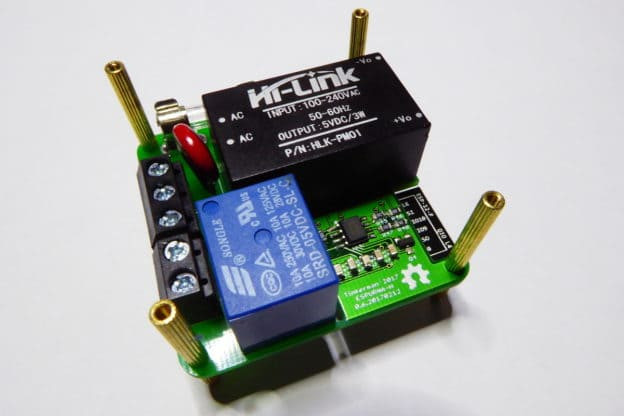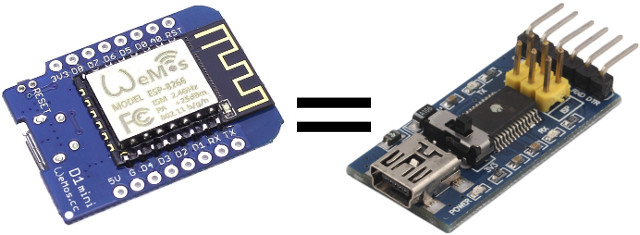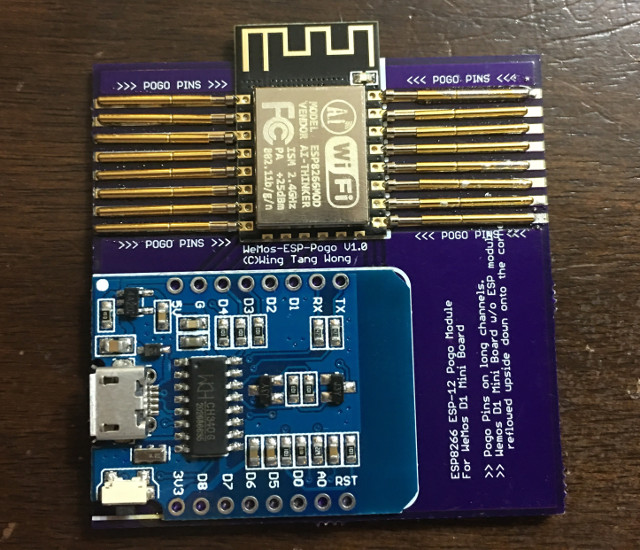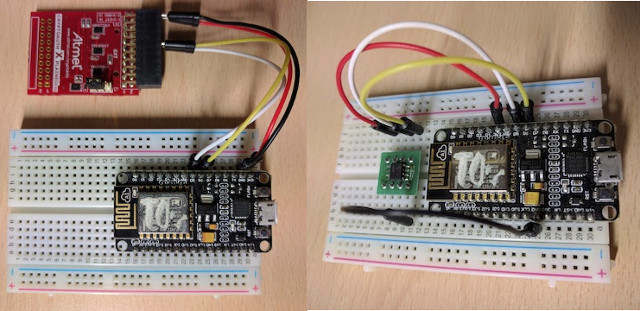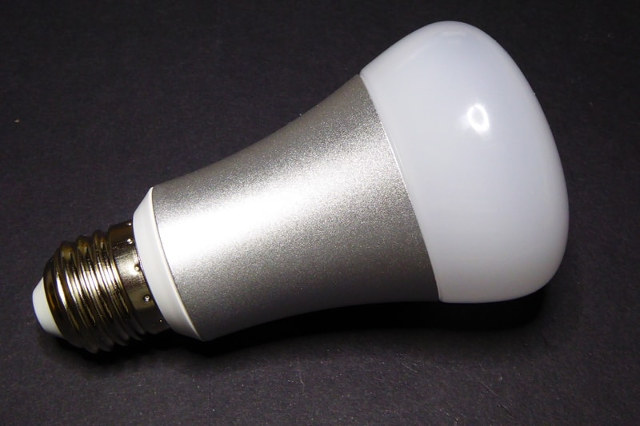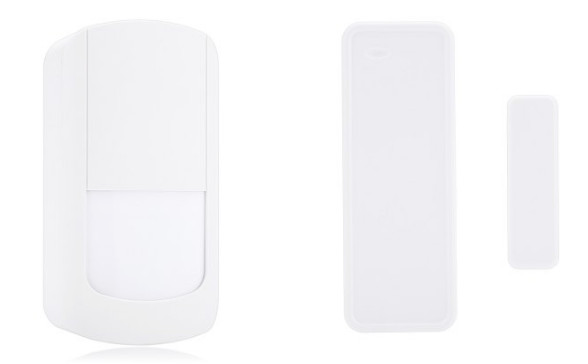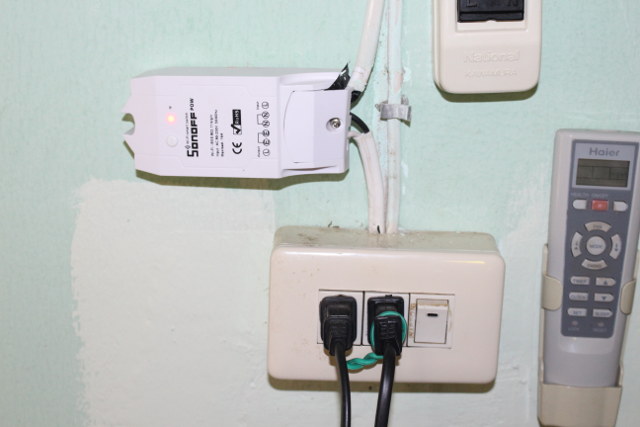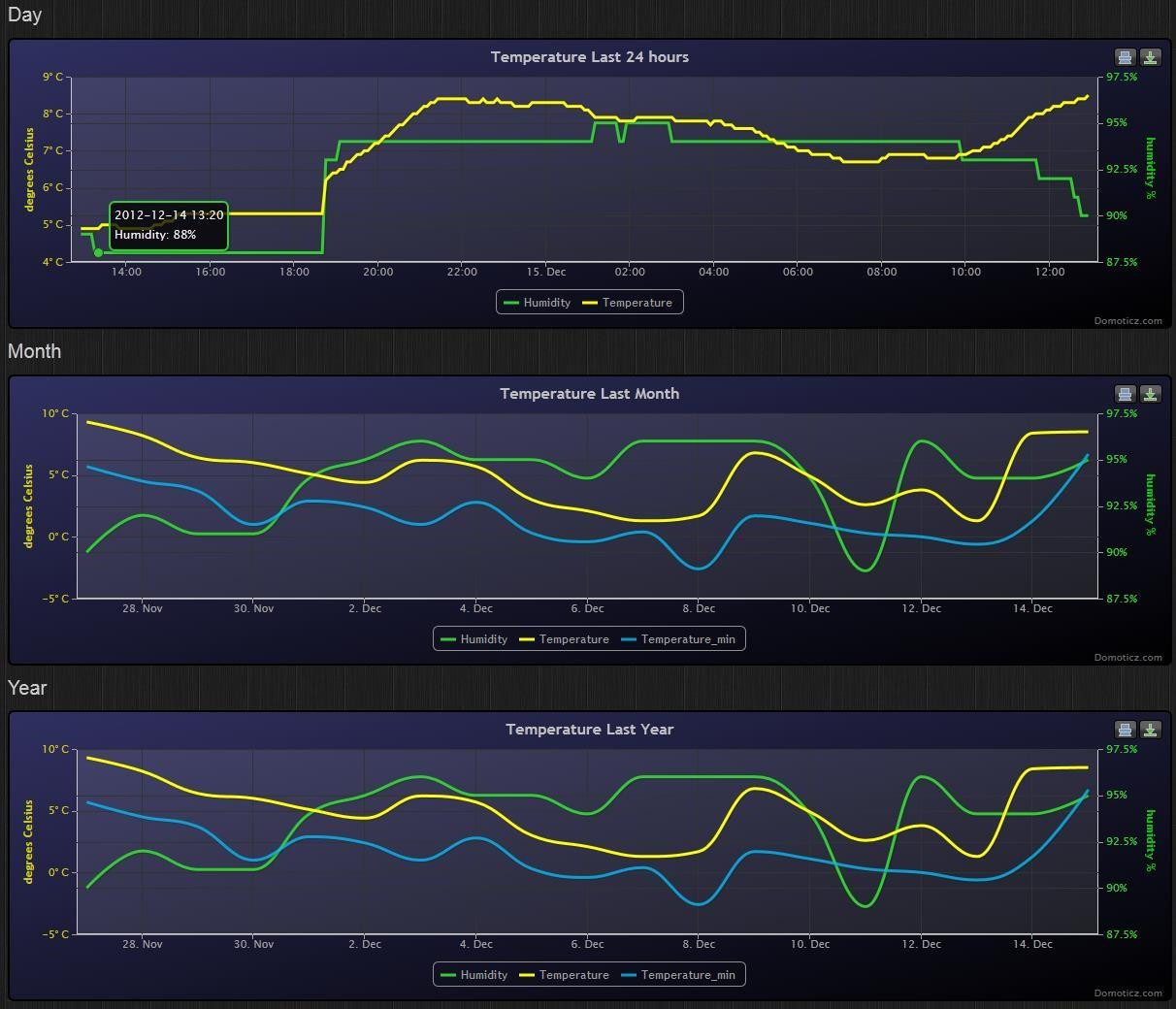ESPurna is an open source firmware for ESP8266 based wireless switch as such Sonoff POW, which I’ve been personally using to monitor my office’s power consumption. The developer, Xose Pérez (aka tinkerman), has now developed his own hardware with ESPurna-H board, as existing wireless switches with power monitoring functions would not fit into a gang box. ESPurna-H board specifications: WiFi Module – ESP12 with Espressif ESP8266 WiSoC Relay – Songle SRD-05VDC-SL-C 10A relay with NO and NC connection Power Monitoring – HLW8012 chip as found in Sonoff POW Expansion – 2x 5-pin header with the programming GPIOs, and two connections for external button and LEDs Misc – Reset button Power Supply Input – 100 ~ 240V AC Output – 5V up to 600 mA via Hi-Link HLK-PM01 Safety – Optical isolation between the logic circuit and the relay circuit Dimensions – 50x50x20mm Xose designed the board with Eagle 8.0 and released […]
Transform Your ESP8266 Board into a USB to Serial Board Easily with Arduino Serial Bypass Sketch
USB to serial boards are necessary to program and debug boards, and/or access the serial console, and while they are very cheap, you may be in a situation where you don’t have any around, but you do have some Arduino compatible boards. It’s been possible to transform an Arduino board into a USB to TTL debug for several years using ArduinoSerialBypass.ino sketch, but I’ve been informed this also works on ESP8266 boards such as Wemos D1 Mini. The sketch could not be simpler:
|
1 2 3 4 5 6 7 8 9 |
void setup() { pinMode(0,INPUT); pinMode(1,INPUT); } void loop() { } |
The code simply makes sure that Tx and Rx pins are set as inputs in order not to disturb the serial connection as explained below: This code makes the Arduino not interfere with pins 0 and 1 which are connected to RX and TX on the FTDI chip. This allows the data coming from the FTDI USB 2 Serial chip to flow directly to another device. […]
Need to Program Many ESP8266 Modules? This Wemos D1 mini based Pogo Jig Programming Board Could Be Useful
If you have many ESP8266 modules to flash with your own firmware this may be time-consuming, but Wing Tang Wong’s ESP8266 Pogo Jig Programming Board could greatly streamline the process, as it just hold ESP-12F module in place using pogopins, so you can go through boards quite quickly. You’ll just need to a Wemos D1 mini board without ESP-12F module to the programming board, and then place your ESP-12F module (or compatible) between the pogopin to program it through Wemos D1 mini’s micro USB port. The board is not for sale (yet?), but the EAGLE design files can be found on Github, and it should not be difficult to find a company to manufacture a few if you need it. Via OSH Park’s Blog. Jean-Luc Aufranc (CNXSoft)Jean-Luc started CNX Software in 2010 as a part-time endeavor, before quitting his job as a software engineering manager, and starting to write daily […]
Secure IoT Connectivity with NodeMCU ESP8266 Board, ATECC508A Crypto Chip, Mongoose OS, and AWS IoT
There are many examples of Internet of Things projects, but more often than not the implementation is not secure, either because the device is exposed to the Internet with minimum or no security (worst case), or a gateway (hopefully) provides secure connection to the Internet, but the communication between sensor nodes and the gateway in the local network is not secure, due to memory limitation of the nodes, for example it might be challenging to implement security on ESP8266. Mongoose OS is an open source operating system for the Internet of Things developed by Cesanta working on ESP32, ESP8266, STM32, and TI CC3200, and the developers have demonstrated a secure solution with Mongoose OS running on ESP8266 connecting over a TLS connection to AWS IoT (Amazon Web Service IoT) and using TLS credentials stored in Microchip ATECC508A CryptoAuthentication Device. The addition of ATECC508 chip either using “XplainedPro extension board for […]
$12 AI Light ESP8266 based WiFi RGB Light Bulb Supports MQTT via ESPurna Open Source Firmware
AI-Thinker is famous in the maker world for their ESP8266 modules, but they’ve also recently launched a WiFi RGB light bulb that sells for about $12.5 and up on eBay and Aliexpress. Some people noticed, and bought samples online, including Xose Pérez (aka Tinkerman), ESPurna open-source firmware developer, who could confirm ESP8266 was used in the light bulb, did some investigations, and eventually added the light bulb into ESPurna, which means it can be managed using MQTT or a web interface. AI Light looks very similar to Philips Hue, but comes with WiFi instead of Zigbee. AI Light “M1636” key features: RGBW LED E27 bulb with 16.7M colors Connectivity – 802.11 b/g/n WiFi Encryption – AES Voltage Range – 110-240V LED Power – 5 watts WiFi Power Consumption – ≤0.3W Temperature Range – -5~45degree Humidity – ≤80% Certifications – FCC, CE, ROHS If you’re going to use the stock firmware, […]
Karl’s Home Automation Project – Part 2: 433 MHz / WiFi MQTT Bridge, Door & PIR Motion Sensors
Karl here again for part 2 of my home automation project. We will be looking at how to automate your lights based on time of day and motion. In the first part we setup Home Assistant and uploaded firmware to basic Sonoff Wifi switches. Today we will setup a 433 MHz to MQTT bridge and some sensors. 433 MHz Depending on your country 433 MHz is an open frequency to use to communicate with. There are hundreds of different types of devices that use 433 MHz to communicate information. We will be focusing on 2 today from Gearbest: WMS07 motion sensor (left) and WDS07 door/window sensor (2 parts, right). I am not taking the door/window sensor apart, since it is super basic, but I’ve included some photos of the PIR motion detector. 433 MHz Bridge While contemplating how to get presence on a per room basis I ran across this […]
How to use Sonoff POW with ESPurna Firmware and Domoticz Home Automation System
Sonoff POW is an ESP8266 based wireless switch with a power meter that comes pre-loaded with a closed-source firmware that works with eWelink app for Android or iOS by default. But we’ve also seen Sonoff POW, and other Sonoff wireless switches from the same family, can be flash with open source firmware supporting MQTT (Message Queuing Telemetry Transport) lightweight messaging protocol such as ESPurna, and I initially sent data from Sonoff POW to ThingSpeak via an MQTT broker (mosquitto) to draw some pretty charts. I did that with the switch connected to a lightbulb, but I’ve since installed Sonoff POW in my office to measure the room’s power consumption minus the ceiling light and aircon as shown below. Sonoff cable mechanism is really a pain for hard copper wires, as they are hard to push inside the mechanism, and something come out. I finally managed by it took longer than […]
How to Install Domoticz Home Automation System in NanoPi NEO and Other ARM Linux Boards
I’ve recently started experimenting with IoT projects, and the first hurdle is to select the hardware and software for your projects are there are simply so many options. For the hardware your first have to choose the communication protocols for your sensors and actuators, and if you are going to go with WiFi, ESP8266 is the obvious solution, used together with your favorite low cost Linux development board such as Raspberry Pi or Orange Pi to run some IoT server software locally or leveraging the cloud. But the most difficult & confusing part for me was to select the server software / cloud services as there are just so many options. I prefer having a local server than something running only in the cloud, as my Internet goes a few hours a month, so I started with a solution combining ThingSpeak with MQTT gathering data from Sonoff power switches running […]


